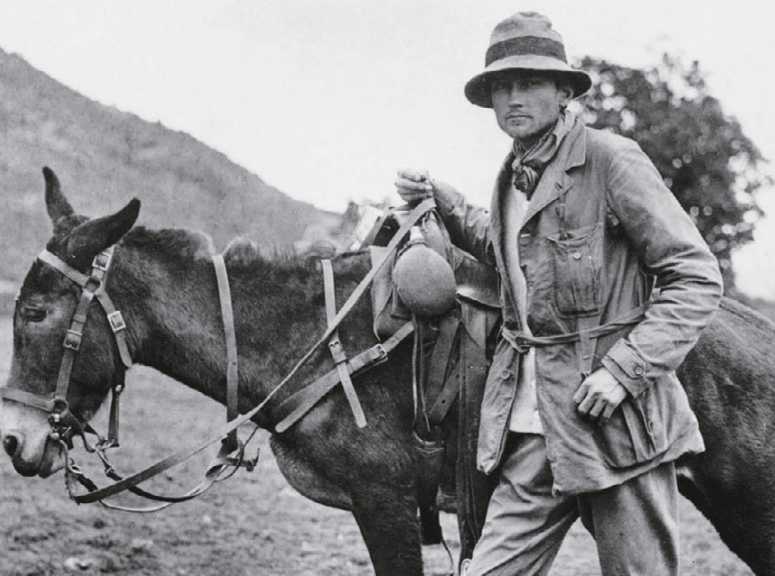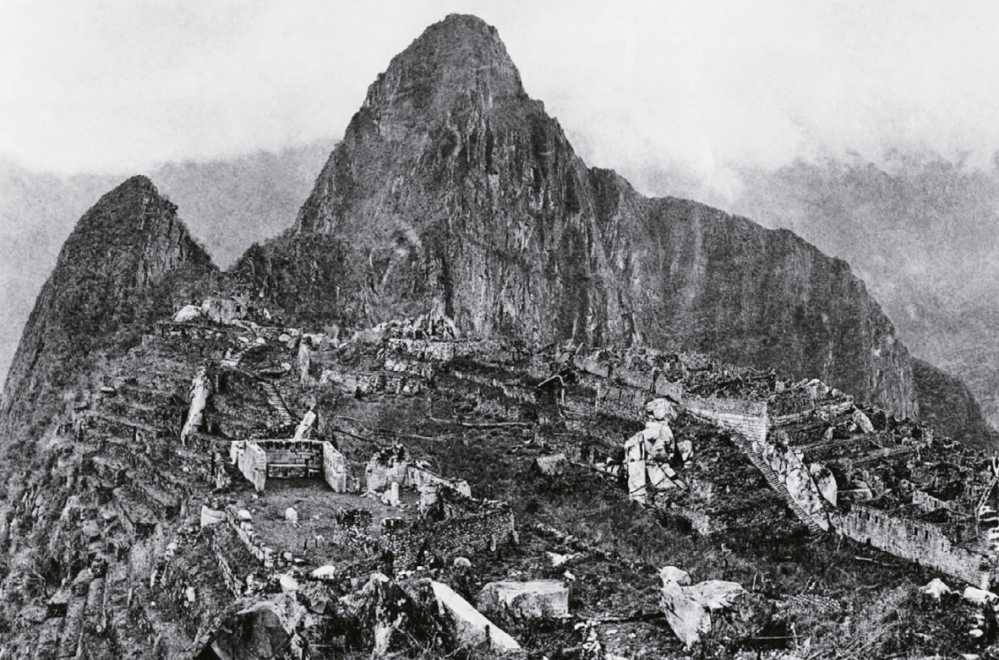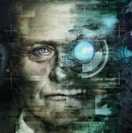If it is said that French biologist Henri Mouhot accidentally discovered Angkor Wat while looking for butterfly specimens in southeastern Asia, which is quite legendary, then the discovery of the ancient Inca city of Machu Picchu in Latin America by American explorer Hiram Bingham is more like a long-planned and carefully planned archaeological and academic journey.
Hiram Bingham was born in 1875, nearly half a century later than Henry Mouhot. This professor of history at Yale University who studies South American history was in his thirties when the two industrial revolutions and overseas expansion of capital in Western Europe and North America in the early 20th century were fully completed, and the world colonial system targeting Asia, Africa and Latin America was fully established.
Compared with many Western European explorers who had to cross the ocean to reach the New World, Hiram Bingham in the United States had a much smoother journey to Peru in South America. After many pioneering efforts since the great maritime discoveries, the secrets of the world have been revealed one by one, and Americans have a considerable degree of understanding and preparation for South America, which is right in front of them.
It was in this context that Bingham accepted the commission of the History Department of Yale University and went to Peru to find a long-lost capital city - the legendary capital of the Inca Empire. It is said that this secret capital was used as a refuge by the Incas after the Spanish conquered Peru in 1532. Many historical records and folk legends point to the mountains and ridges of the Andes Mountains and the inaccessible places.
The descendants of the Bingham family
Unlike Henry Mouhot and other explorers who started their careers halfway, Hiram Bingham, who came from a distinguished family and graduated from a professional school, was more like a lucky man who was "born with a silver spoon in his mouth".
In addition to being a historian and explorer, Hiram Bingham was also a politician with considerable achievements. After the First World War, Bingham gave up his pen and entered politics. The peak of his political career was when he served as governor of Connecticut in 1925 and served as a U.S. senator from 1925 to 1933. In 1956, when he died in Washington, his coffin was placed in Arlington National Cemetery in the United States - the resting place of many people who have made outstanding contributions to the United States.
Although the United States is a young immigrant country, it has still produced many famous families. The Bingham family is one of them. The Bingham family was originally a missionary family. They rose in the 19th century and formed a huge family business. In their heyday, they had huge capital and became a monopoly giant in the market. They once owned the Louisville News and the Times. In 1900, Hiram married a woman from the Tiffany family, the granddaughter of the founder of the Tiffany Diamond Group. This marriage consolidated the wealth and status of the two families.
For Hiram Bingham himself, the biggest gain from the marriage with the Tiffany family was his seven outstanding sons. They were all worthy of the family name, diligent and motivated, and excellent in both character and learning. Among them were politicians and artists who influenced American history.
Growing up in Honolulu, the United States, with the support of a distinguished family background, Bingham received an elite education since his youth. From junior high school to high school, Bingham studied at the famous American church school, Oahou High School in Honolulu, and stayed there for ten years. After that, he studied at the famous American private high school Phillips Academy for two years. Later, he was admitted to Yale University.
In the late 19th century and early 20th century, the church in the United States became increasingly secularized and diversified. According to the tradition of the Bingham family, Hiram Bingham followed the wishes of his father and became a respected missionary after graduating from college. However, his missionary career soon ended, and he went to Harvard University to pursue a doctorate. He graduated in 1905, and two years later, he was hired as a history lecturer at Yale University for his outstanding performance.
No information is disclosed about Bingham’s mental journey of abandoning his clergy and becoming secular. Perhaps his wealthy family background is a huge pressure for personal choice. Whether Hiram Bingham made this decision to follow his heart or have other deep meanings is unknown to future generations.
With such a brilliant background, it is not difficult to imagine that Bingham’s pattern is naturally different from that of ordinary historians. He was not a researcher who was content to bury himself in old papers. From the clues in historical documents, he began to have great curiosity about the Inca Empire in South America.

In 1906, the year before he taught at Yale. Bingham went to South America with great interest, looking forward to putting the words he read on the pages into practice. He traveled all over South America and left a travel note "Journey from Venezuela to Colombia". He also deliberately retraced the ancient commercial trade routes since the great maritime discoveries, traveled by boat along the deep-water ports, from Buenos Aires in Argentina to the port city of Lima in Peru. After walking the Inca Trail, he published a travel note "Across South America".
It can be said that before discovering the ancient city of Machu Picchu, Bingham was already a "reader of thousands of books" and "traveler of thousands of miles", and a well-deserved expert on South America and Peru.
Adventure in the Andes
In July 1911, during the winter in the southern hemisphere, Bingham led an archaeological team to ride into the Andes Mountains in Peru. This well-trained team of scientists came from Yale University. In addition to being able to adapt to high-altitude hiking, they can also conduct professional excavations. Although the rumored Inca royal city has not been seen by the world for hundreds of years, Bingham is determined to get it this time.
The Bolivian Plateau in the central part of the Andes Mountains, about 75 kilometers from the Peruvian capital of Cusco, has always been active in crustal movement and has many relics of volcanic activity. The temperature here changes rapidly. It may be sunny and the temperature is as high as 20 degrees just now: but it will soon rain heavily. Bingham’s team found nothing at first and encountered bad weather. On the morning of the second day after they arrived, looking at the strong wind and heavy rain outside the inn, thinking of the steep mountain road and the rushing river under the plateau, no one in the team was willing to go out and try their luck.
But Bingham was inspired by a rumor at this moment and was extremely excited. Because the innkeeper told him that there was indeed a ruin on the top of Huaynapicchu in Machu Picchu. In the local indigenous language Quechua, "Machu Picchu" means "ancient mountain". On this ancient ridge at an altitude of 2,350 meters, local farmers often traveled to a huge ruin. Those terraced fields were once overgrown with weeds, but now they have been cleared and reused. In the harvest season, they will be full of corn, potatoes and peppers. This made Bingham wonder if this was the ancient city of Vilcabamba, the royal city of the Inca Empire that he had been looking for?
Accompanied by the store owner and a local, Bingham marched towards the legendary ancient city. They walked through the steep and narrow path, and under their feet they could see the fast-flowing Urubamba River and the snow-capped mountains that were thousands of meters high. He saw "golden, misty snow-capped peaks", "graceful, huge granite cliffs", and "many orchids and ferns"... Bingham, who had traveled most of South America, couldn’t help but say in his notes: "There is no place in the world I know of that can compare to the scenery here."
Obviously, danger also exists with beautiful scenery. The terrain along the way is extremely steep. The mountain path opened by foot is only wide enough for one person to walk sideways. The changing weather and slippery road surface exacerbate the danger. Once they roll down the mountain stream with the mule, they will be crushed to pieces in an instant and swept away by the water. If the Inca people could really build their capital here, they would have to endure hundreds or thousands of times more hardships and obstacles than today. It is really hard to imagine how people built the city in this desperate situation.
Finally, the "city that disappeared in the mist" Machu Picchu appeared before his eyes. These gray-white granites looked as thrilling as the close-ups of the wonders in a dream. Bingham first noticed a royal tomb, then a sun temple and then a huge square, surrounded by more temples and countless houses.
The ruins Bingham saw consisted of about 140 buildings, including temples, wealthy areas, royal palaces, shelters, parks and residential areas. It was like a city. Under the two peaks of Machu Picchu and Vaira Picchu, the ancient city on the ridge was framed by stone terraces with high and low functional areas in patches. The agricultural area was surrounded by many paths and garden platforms, and the commercial area was dotted with many thatched houses and temples. The artificial traces left by civilization were obvious. For example, there were about 100 granite stairs: connecting the city in all directions. Among them, the city’s irrigation system, pools, ditches and sewers are interconnected, leading to the irrigation system of the farmland at the foot of the mountain.
Although weeds, trees and vines almost overran the broken walls of the stone houses, Bingham recognized the characteristics of the Inca Empire at a glance.

Because these buildings are carefully carved and combined with a precise mechanical logic. Legend has it that the Incas are good at using perfect whole stone cutting techniques, so the walls are regular and smooth, the joints are almost impeccable, and even a dagger cannot be inserted between the stones. Because of this, even after hundreds of years of wind and rain, the ruins are still solid. How did the Incas carry these 20-ton stones to the top of the mountain? Some say they cut the mountain into stone buildings and threw the extra stones off the cliff; others say they used mysterious power to lift the large stones around the valley to the top of the mountain.
But Bingham didn’t have time to think about it. He excitedly rushed back to the camp and called all his companions. Regardless of whether the Inca city he was looking for was in front of him, this discovery was enough to amaze the world. Afterwards, Hiram Bingham "brought back" more than 5,000 cultural relics and antiques found in the ancient city of Machu Picchu to Yale University for research, and wrote a book "The Lost Inca City". Two years later, the American National Geographic Tea Journal grandly launched Bingham and Machu Picchu, and the lost ancient Inca city finally returned to the world’s vision.
Inca Empire
Based on his love for the Inca civilization, Hiram Bingham and his team have come to Peru many times. Some people also say that Bingham was looking for the Inca Empire for the legendary gold and silver treasures.

Near Machu Picchu, in a place called "Ghost Plain" by the locals, Bingham and others discovered a larger Inca city site-Espiritu Pampa. Bingham once speculated that this might be the ancient Inca royal city of Vilcabamba that he had been pursuing all his life, which was confirmed by later research.
The Inca Empire is an ancient empire in the Americas. They were active in the Andes from the 11th to the 16th century. In their heyday, they covered Peru, Ecuador, Colombia, Bolivia, Chile, Argentina and other countries, with a territory of 3,000 miles from north to south. They believed in the sun god, and because they left no written records, only mysterious knotted ropes, they have always been a legend in the Americas.
It is said that the Inca people are the children of the sun, and there are four brothers and four sisters. Among the four brothers, Manco Capac was the leader. He led the conquests and eventually unified the tribes in the entire Andes region. In 1243, Manco Capac established the Inca Empire and declared himself the descendant of the sun and the supreme monarch - "Inca". Inca means "the country of four continents"
During the reign of Topayaca, the Inca Empire reached its peak with a population of more than 10 million. It lasted for 300 years from its founding to its destruction by Spain in 1533.
How did the Spaniards make the people and wealth of the Inca Empire evaporate overnight? Since Bingham, historians have been discussing this issue. Some say that they were plundered by Spanish colonists, while others say that the people sank into the lake overnight with gold, silver, treasures and the king’s mummy. So far, there is no conclusion on this issue. Only the mountains guard Machu Picchu, which has been silent for 500 years, and their outlines are like the faces of Incas looking up at the sky.
Bingham died after World War II. He had many achievements in his life, but his greatest contribution was the discovery of the ancient city of Machu Picchu. The cultural relics that Bingham brought to Yale University have been a pain in the heart of the Peruvian government for many years. In 2016, they finally returned these national treasures through negotiations. In the Cusco Museum built by the two sides, future generations will be able to see these precious collections, and they will be forever associated with Bingham’s name.
















